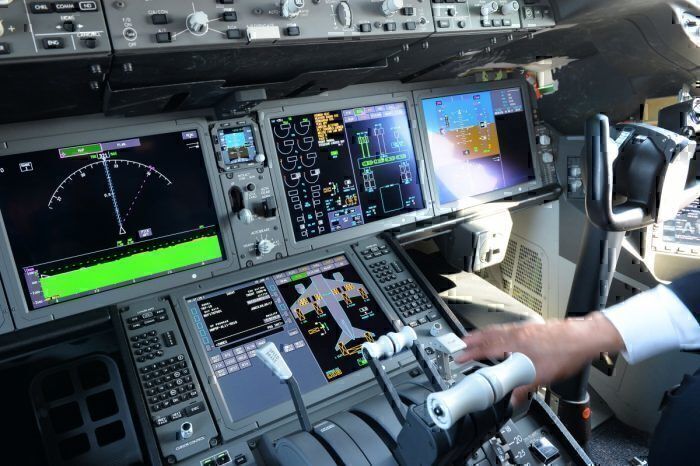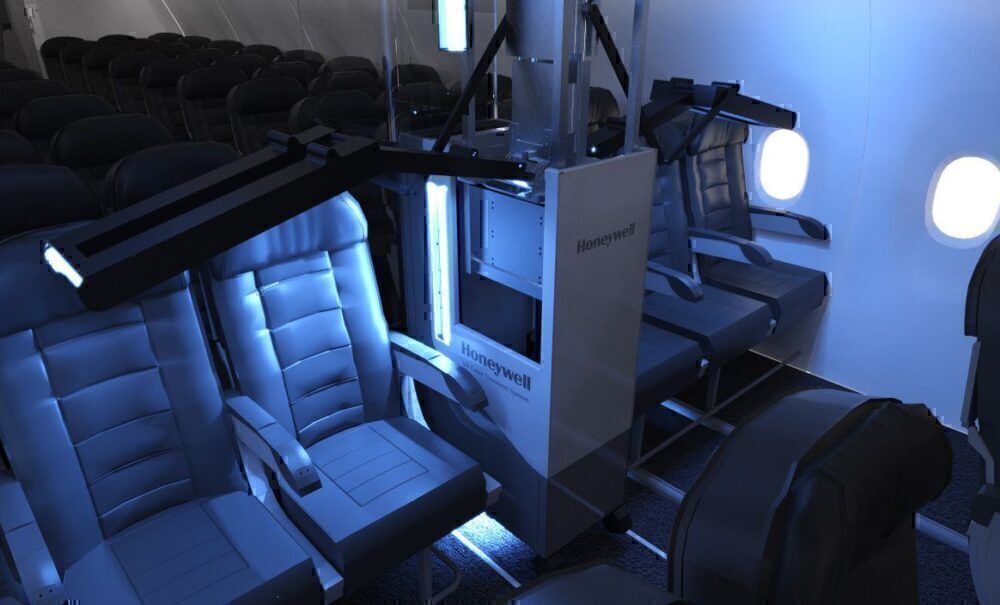United Airlines is stepping its aircraft sanitation procedures up a notch. The Chicago-based carrier is sanitizing cockpits with ultraviolet (UV) lighting technology. It is all part of a focus on delivering a new level of cleanliness at United Airlines that benefits both passengers and crew.
United Airlines has partnered with the Cleveland Clinic to guide its policies and procedures on safety and cleanliness.
Why use ultraviolet lighting? The answer is simple. Dr. James Merlino, Chief Clinical Transformation Officer at Cleveland Clinic, says ultraviolet light can kill the coronavirus. Properly applied, UV lighting damages the nucleic acids within an organism and prevents it from replicating. Tests have demonstrated that ultraviolet lighting can sterilize 99.9% of the coronavirus within 30 seconds.
Aircraft cockpits a challenging space to clean
United Airlines is using handheld, AUVCo blades developed by the American Ultraviolet company. They will disinfect the cockpits as aircraft pass through United's hub airports.
Bryan Quigley, United's senior vice president of flight operations, said in a media statement on Thursday;
"Flight decks have many working parts, screens, and components that are challenging to clean with traditional hand wipes and liquids, especially for someone who isn't a pilot. The UVC lighting gives us a faster, more effective disinfection of one of the most important areas of the aircraft."
United Airlines uses electrostatic sprays to clean aircraft cabins
United Airlines says it is continually working to improve its aircraft cleaning processes. Currently, the airline uses electrostatic spraying to disinfect its aircraft cabins. Electrostatic spraying involves spraying an electrostatically charged mist onto surfaces and objects. According to United Airlines, electrostatic spraying is one of the most effective techniques to clean hard to reach surfaces, particularly overhead bins and spaces within tray tables.
But any mist, electrostatically charged or not, can play havoc with a cockpit's electrical and computer systems. United Airlines says it is a case of matching the right technology with the right type of environment.
JetBlue also trials ultraviolet cleaning
United's take-up of ultraviolet lighting technology comes days after competitor JetBlue said it would trial the use of UV lighting technology to sanitize aircraft cabins. JetBlue is using ultraviolet cleaning machines developed by Honeywell. The manufacturer says one machine can sanitize an average-sized aircraft cabin in approximately ten minutes. JetBlue is now trialing eight of the machines at New York's Kennedy Airport and Fort Lauderdale-Hollywood International Airport.
The pivot towards UV sanitation across the airline industry is being fuelled by health and hygiene concerns. But the tools to sanitize aircraft with ultraviolet lighting technology have existed for years.
Ultraviolet cleaning expected to pick-up across the airline industry
California company Dimer UCV Innovations developed an ultraviolet cleaning machine specifically for aircraft in 2014. Places like hospitals and laboratories have been using UV technology to sanitize spaces for some time. But before the COVID-19 outbreak, interest from the airline industry was low. Elliot Kreitenberg, president and co-founder of Dimer UCV Innovations, told Reuters in April.
"We didn't want it to take a pandemic to create the demand in this industry. That's the situation we're in, and we're building our units as quickly as we can,"
As the recent take-up of ultraviolet lighting technology by both United Airlines and JetBlue indicates, the airline industry is now making up for lost time. With the ability to sterilize 99.9% of the coronavirus within 30 seconds, ultraviolet cleaning machines can be a fast and cost-effective way to ensure planes are clean and safe to fly in. We might be seeing far more extensive use of UV technology across the airline industry soon.
Altogether, what are your thoughts about ultraviolet cleaning processes on aircraft? Let us know what you think in the comment section.



